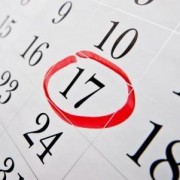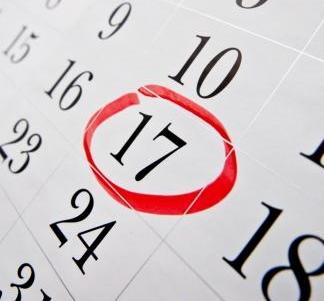Preparing for Auditions (Before you start practicing)
1) Make sure you know the dates and deadlines.
This seems pretty obvious, but if you are preparing for multiple auditions at the same time, you may get the different deadlines confused. And it doesn’t matter how well you play, if you miss the entry deadline, you won’t get a chance to play even one note. So get organized from the beginning.
There are probably two or three dates you need to go circle on your calendar:
The Application deadline,
the Pre-Screen/Tape Round deadline,
and of course, the Audition Day itself.
Put these dates on your calendar, circle them, block them off etc. And make sure you don’t book yourself for other gigs over the audition day.
2) Get the sheet music together, and bracket the excerpts.
Once you know the dates, find yourself some copies of the excerpts that you have to play. If the orchestra sent you all the excerpts, then you are in great shape, proceed to step No. 3. Sometimes the orchestra you are auditioning for will send you some of the really obscure, or hard to find excerpts: Shostakovich, Bruckner, Mahler etc. Before the days of imslp.org, it used to be a pain in the neck to find excerpts.
It still is a great idea to buy original parts to the entire symphonies that the excerpts come from if you have the cash for that. Otherwise, you may want to try to photocopy a good edition with some good bowings and fingerings from your friend, teacher, library, your local orchestra’s library etc.
Once you have all the excerpts together, be meticulous about knowing which measures of each excerpt are being asked. Excerpts vary from one audition to another, and Chicago might want 5 more measures of the same Mozart excerpt than San Diego, for instance. Bracket off the measures, and make a note about which audition it is for especially if you are preparing for multiple auditions.
It’s also a good idea to keep the list of the requested excerpts handy. Tape it to the back of your music stand and reference it often. The last thing you want is to get to the audition and realize you didn’t prepare one of the excerpts.
3) Listen to the Excerpts
By now, you’re probably eager to start practicing them, but do yourself a favor. Listen to them first! This is usually one of the most depressing parts of the journey for me, because I realize the amount of work that I am going to have to do to play the excerpts. It’s like staring up at Mt. Everest: there’s so far to go. But, listening to the excerpts gives you a headstart in learning the rhythms, notes, dynamics, tempi, and style.
Don’t dwell on the recordings forever, you’ve got to keep moving. Listening to the excerpts is something you should do early and often. When you have more time, listen to the entire symphony or work, and other works by the same composer. The audition panel isn’t just looking for someone who can play the right notes at the right time, they want someone who understands the style of the composer, and how their part fits in with the rest of the orchestra, and you have to know what else is going on in addition to your part if you want to win.
Listen to multiple recordings of the same excerpt if you can, and of course, if you can find a recording from the orchestra or conductor that you are auditioning for, definitely listen to that one.
4) Find a target metronome marking range for each excerpt.
While you are listening to the excerpts, grab your metronome, which is going to become your new best friend during the audition preparations. Find an approximate metronome marking for each of the excerpts you need to prepare. If you can, find multiple recordings of the same excerpt. You’ll soon discover that there are some very different interpretations of each excerpt. Find a target range of metronome markings to shoot for, and write them at the top or in the margins of each excerpt.
The opening of Mozart’s Symphony No. 39 is a good example of the extreme tempo range. Leonard Bernstein and the NY Phil recorded it at about Quarter note = 38. But Sir Charles Mackerras and the Prague Chamber Orchestra recorded it at Quarter note = 60.
Leonard Bernstein: New York Philharmonic, 1967
Sir Charles Mackerras: Prague Chamber Orchestra.
That’s a pretty significant tempo difference and yet both are very convincing. Write down these tempi, and see what works with you. A tempo that works for the whole orchestra, might not work so well when played by yourself. You can finalize these decisions later, now it’s time to start practicing!





